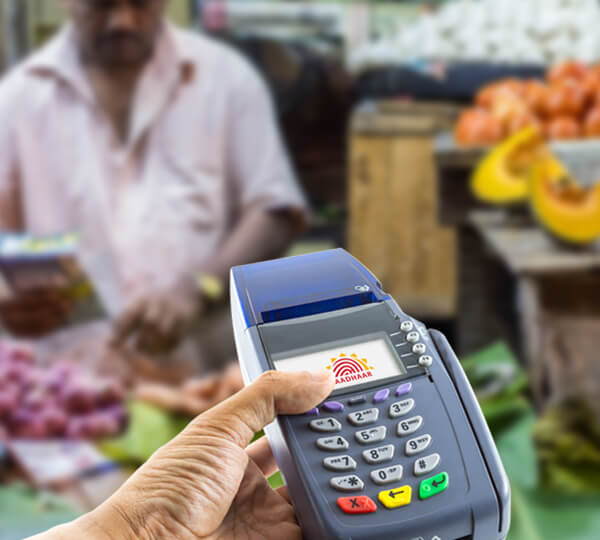The Illusion of Inclusion: The Landscape of Digital Banking in Africa

By Khadija Ba, Legatum Student Fellow 23
Africa’s financial landscape is undergoing a seismic shift driven by the rapid ascent of digital banking. This technological revolution is reshaping conventional banking practices and raising the potential to address a pressing challenge: financial exclusion. As illuminated by the World Bank’s Global Findex Report, Sub-Saharan Africa has an alarmingly low 55% of adults with access to formal banking, in contrast to the global average of 76%. Empowered by advanced technologies and widespread mobile connectivity, digital banking is positioned as a solution to bridge this divide through accessible, convenient, and affordable financial services. However, as its influence grows, it is imperative to critically assess whether digital banking authentically fulfills its pledge of inclusivity or inadvertently perpetuates the pre-existing disparities within the banking sector.
The evolution of digital banking across Africa has been nothing short of remarkable, tracing its roots back to the early 2000s with the introduction of pioneering mobile money solutions such as M-Pesa in Kenya. This transformative journey was ignited by the swift proliferation of mobile phones and the urgent imperative to cater to a predominantly unbanked population. What began as simple mobile money and remittance services matured into comprehensive digital banking platforms that now operate primarily or exclusively online and through mobile applications. Offering an array of services, from loans and fund transfers to bill payments and investments, these innovative institutions often leverage data and artificial intelligence to deliver personalized banking experiences. Powerhouses like South Africa, Kenya, and Nigeria have emerged as frontrunners, boasting sophisticated digital banking ecosystems, while nations like Congo and the Central African Republic falter, hindered by infrastructural deficiencies, regulatory hurdles, and socio-political instabilities.
Amidst the sector’s rapid expansion, numerous voices have arisen to question the industry’s ability to truly deliver on its inclusive potential. This scrutiny takes on particular significance when considering the successes of models like Latin America’s Nubank and China’s Alipay. These comparisons unveil distinctive challenges that hinder the progress of digital banking across the African continent.
Firstly, access remains a prevalent issue. Inequalities in access to digital financial services persist due to barriers such as expensive mobile airtime, lack of financial literacy, and unreliable infrastructure for financial transactions. Mobile network quality and coverage remain concentrated in major cities, leaving rural areas underserved and disadvantaged.
Secondly, serving the financially excluded comes at a cost. A report by BCG Consulting shows that only 5%, or 13 out of 249 digital banks worldwide, are profitable, ten of those players being located in Asia Pacific. Delving into Africa, McKinsey’s analysis paints a starker picture, estimating that fintechs in the region face customer acquisition costs that significantly outstrip the revenue they earn per customer. Alarmingly, some companies spend up to $20 to onboard a customer, only to reap a revenue of $7 from them. This calls into question the long-term viability of the business model adopted by many of Africa’s tech-driven digital banks.
Lastly, the target audience for digital banks in Africa appears to be young, tech-savvy, and urban individuals in their 20s and 30s, who are already well-acquainted with smartphone applications and are likely already banked. This trend prompts the question: Are digital banks genuinely championing financial inclusion, or are they merely offering alternatives to those already catered to by conventional banks, while overlooking older generations and remote communities?

However, despite these challenges, digital banking continues to present substantial opportunities for driving financial inclusion. A compelling illustration lies in Brazil, where the emergence of neobanks like Nubank, coupled with the impact of the COVID pandemic, led to a sweeping inclusion of individuals into the banking system. This rapid shift saw the percentage of Brazilian adults with a bank account soar from 56% to 84% in less than a decade.
India stands out as another compelling example of the transformative impact of digital banking. Notably, the introduction of the Pradhan Mantri Jan Dhan Yojana (PMJDY) in 2014, a comprehensive financial inclusion initiative, paralleled the rise of digital banking platforms such as DBS’s Digibank. This synergy sparked a significant surge in formal financial sector participation. A PwC report underscores this shift, revealing that between 2014 and 2017, more than 300 million bank accounts were established under PMJDY. This resulted in a noteworthy escalation in the percentage of Indian adults with bank accounts, soaring from approximately 53% in 2014 to 80% by 2017. The government’s strategic demonetization policy in 2016 further expedited the nation’s transition to digital platforms, solidifying their pivotal role in advancing financial inclusion.
In the context of Africa, the journey towards attaining comparable growth and genuine financial inclusion within the realm of digital banking is complex and multi-dimensional yet achievable if the following conditions are considered.
Partnering with telecom firms, mobile money providers, and seasoned businesses like e-commerce platforms presents digital banks in Africa with myriad benefits. These partnerships can bolster brand visibility, tap into an existing clientele, ensure USSD connectivity, and harness vast data pools for enriched customer insights and tailored services. Such synergies not only propel the growth of digital banks but also bridge the technological gap, extending financial services to a wider audience. A case in point is South Africa’s TymeBank or Kenya’s Equity Bank, which have onboarded millions of previously unbanked individuals thanks to alliances with the leading telecom entity MTN Group and the leading mobile wallet provider M-PESA, respectively.
Tailoring financial products to niche segments is another pathway to financial inclusion. Recognizing and delving into the distinct needs and spending patterns of underserved groups can empower digital banks to craft solutions that resonate more closely with these communities. For instance, offering microloans specifically tailored for small-scale farmers during planting season (case of KCB M-PESA) or providing easy payment solutions for local artisans can make a tangible difference. This not only leads to products that are more attuned to individual preferences but also widens the customer spectrum, attracting a more varied clientele.
Lastly, government and regulatory support are crucial in this endeavor. One major hurdle facing digital banks in Africa is the restrictive nature of banking licenses. By revisiting and streamlining the licensing process, governments can pave the way for innovative banking models that better serve the needs of the population. Open banking policies, which allow third-party developers to access financial data, are another game-changer. Authorities can foster a more integrated financial ecosystem, enabling smoother, more efficient transactions and enhancing customer experience by advocating for open banking practices. Nigeria is at the forefront in this regard, having been the first country on the continent to fully adopt open banking regulations and to release operational guidelines promoting data sharing between traditional banks and new fintech entrants.
Complementing these policy-driven reforms requires significant investment in digital infrastructure. Affordable internet connectivity can be championed by governments forging partnerships with the private sector to extend network coverage to the continent’s most remote areas. Furthermore, targeted campaigns to enhance financial literacy will arm rural communities with the knowledge to leverage these digital banking platforms effectively. By harmoniously intertwining these elements – policy reforms, infrastructure development, and education – governments can position digital banking as the bedrock of financial inclusion across Africa.
In the current landscape, Africa’s digital banking sphere embodies both revolutionary potential and persistent obstacles. To fully harness the transformative force of this digital revolution, the paramount focus must remain on fostering all-encompassing growth. Reflecting the sentiments of Ousmane Diagana, the World Bank’s VP for Western and Central Africa, the transformation in financial services necessitates bridging the digital divide, constructing digital foundations, and establishing a unified digital marketplace. The time for decisive action is upon us. As the continent positions itself for proactive strides, it becomes imperative to champion collaborative efforts across sectors, tailor services to suit its diverse population, and fortify regulatory frameworks. Through these endeavors, Africa can transition from the semblance of progress to genuinely fulfilling the potential of digital banking: authentic, widespread, and sustainable financial inclusion.
References:
“The Global Findex Database 2021.” World Bank, 18 Nov. 2022, www.worldbank.org/en/publication/globalfindex/Report
Alatovic, Tarik, and Luís Cunha. “Lessons from the Rapidly Evolving Regulation of Digital Banking.” McKinsey & Company, 1 Oct. 2021, www.mckinsey.com/industries/financial-services/our-insights/lessons-from-the-rapidly-evolving-regulation-of-digital-banking
Nubank. “Nubank Included 5.7 Million Brazilians in the Credit Market in One Year.” Nu International, 20 Mar. 2023, www.international.nubank.com.br/company/nubank-included-5-7-million-brazilians-in-the-credit-market-between-july-2021-and-july-2022/
Montel, Leonardo. “Brazil Feeling the Unintended Consequences of Massive Banking Inclusion.” The Brazilian Report, 2 June 2023, www.brazilian.report/business/2023/06/02/debts-massive-banking-inclusion/
Caron, Laura. “Digital Banking Is the In-Thing — but It Excludes Many Users in Tanzania and Senegal.” The Conversation, 4 Nov. 2022, www.theconversation.com/digital-banking-is-the-in-thing-but-it-excludes-many-users-in-tanzania-and-senegal-180092
Gagua, Frances. “Did Digital Banks Fail to Disrupt?” Asian Business Review, 29 Mar. 2023, www.asianbusinessreview.com/banking-technology/exclusive/did-digital-banks-fail-disrupt
Choi, Jungkiu, et al. “Winning the Digital Banking Battle in Asia-Pacific.” BCG Global, 7 Sept. 2021, www.bcg.com/publications/2021/digital-banking-asia-pacific
“Nigeria Greenlights Open Banking to Deepen Financial Inclusion, Boost Innovation.” Pymnts.Com, 10 Mar. 2023, www.pymnts.com/bank-regulation/2023/nigeria-greenlights-open-banking-to-deepen-financial-inclusion-boost-innovation/
“A Wider Circle – PWC India – Consulting | ESG | Financial Advisory Services.” A Wider Circle: Digital Lending and the Changing Landscape of Financial Inclusion, Nov. 2019, www.pwc.in/assets/pdfs/consulting/financial-services/fintech/publications/a-wider-circle-digital-lending-and-the-changing-landscape-of-financial-inclusion.pdf.



